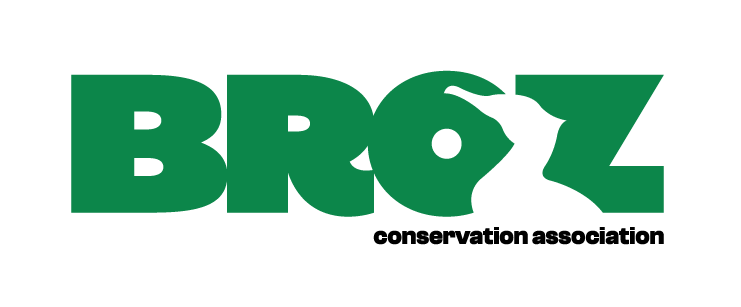About the European Open Rivers Programme
The European Open Rivers Programme is a Dutch grant giving foundation funded by Arcadia.
Arcadia is a charitable foundation that works to protect nature, preserve cultural heritage and promote open access to knowledge. Since 2002, Arcadia has awarded more than $1 billion to organizations around the world.
https://openrivers.eu/projects/202304431-four-barrier-removals-slovakia/
Why we implement the Foki for fish project?
The Danube is the second largest river in Europe, flows through ten countries, supplies drinking water to around 20 million people and connects 83 million people in the Danube basin. The Danube is home to a wide range of important wildlife species. In Slovakia the wildest part with many islands has formed between the city of Bratislava and the village of Klížska Nemá. This specific area is formed by the main river bed, its side branches, a massive tangle of smaller and larger branch systems in combination with islands, wetlands, floodplain forests and meadows. Many species of animals, including a large number of fish, amphibians and birds, have found refuge and favourable breeding conditions here. During the growing season it is an almost impenetrable area full of life – a true Central European Amazon.
Whole this inland delta was affected by the 19th and 20th century alterations including the construction of the Gabčíkovo hydropower plant with dams and artificial navigation channel where the most of the water was rerouted from original river bed. The branch system between Dobrohošť and Sap village changed radically. Many side arms and large river branch systems have been highly negatively affected by changed water regime. Most of river branches lost the dynamics and have been degraded more than 30 years. For decades, our largest wetland system, unique inland delta with more than 4500 ha of alluvial habitats, was left with minimum amounts of water and without river dynamics. Despite the negative effects caused by extreme interventions, the area still represents ecosystem with wide range of the largest wetlands complex in Slovakia with high degree of biodiversity.

Objectives of the project
In the past, when the Danube was modified for navigation, hydropower and canal construction, many flowing arms were cut off from the main channel and most of the formerly flowing parts of the river were turned into backwaters. After 1992 (when the Gabcikovo hydroelectric power plant and the navigation canal were put into operation), up to 50 % of the Danube’s habitats in Slovakia were lost. The most affected section of the inland delta is the part between Dobrohošt’ and Sap, including the part called Istragov and the side arm of the Foki. (cadastral territory of Gabčíkovo). These changes have drastically affected fish populations and reduced their abundance by up to 70 %. One of the main reasons for this dramatic decrease is inaccessible and/or degraded spawning grounds and reduced/lost dynamics.
Therefore, the main objective of the project is to restore the side channel by reconnecting it to the main channel – the old Danube. Restoration of the water regime and implementation of measures to restore water dynamics. By restoring the natural processes of the river, the long-term effect, which will occur gradually, will be on a much larger scale. Just as the decline of fish in the Danube has been gradual, the return and recovery of fish populations will be gradual, with an impact on the whole flow, not just the restored section. A positive effect will be achieved for the Danube’s habitats, including the breeding and feeding habitats of many species that have suffered for decades from deteriorating conditions as a result of extensive Danube regulation. The measures implemented will allow native rheophilic Danube fish species access to their spawning grounds and allow the development of juveniles (e.g. Chondrostoma nasus, Gymnocephalus schraetser, Zingel streber, Zingel zingel, Rutilus pigus). Restoring the water regime in the side channel will also be important for improving conditions for one of the most threatened habitat types in Europe – floodplain forests. The positive effect will also be evident for humans – improved groundwater levels and regime, as well as better water retention in the landscape, thus increasing resilience to drought. These measures will also contribute to improving the natural protection of the area against flood risk.
Large part of the area is one of the Ramsar location in Slovakia. It is included to Natura 2000 network as Spatial protected area (SPA) as well as Site of Community Importance (SCI). On National level the area of Danube floodplains is Protected Landscape area with several small protected areas with the highest degree of protection.

Planned revitalisation measures
The implementation of the proposed measures within the Foki for Fish project demonstrates a pilot connection of a degraded side arm directly to the old Danube riverbed, which is strongly negatively affected by the construction of the Gabčíkovo hydroelectric power plant and the navigation channel. The main objective of the project is to restore the water regime in the Foki side channel by reconnecting it to the old Danube riverbed and removing several barriers located directly in the side channel. As artificial barriers were indentified two traverses and three groynes. On the basis of expert study is planned remodelation of existing groynes by reduction and shortening to the required level. The traverses will be removed to the total width of the restored side arm. The overall length of restored Danube side arm will be 2 km. Project Foki for Fish has two specifics. (1) It is the first time the restoration of side arm by reconnection to Old Danube river bed (river section highly negatively influenced by VDG construction) and (2) the inlet to the side arm is planned below the level of low regulatory and navigable water, what is first time in SR when it is allowed to restore inflow in so low level. Thanks to these specifics we expect a whole year connection with the main Danube riverbed. For these specifics, it is an excellent opportunity to gain new knowledge and skills as well as their further spread (replications).
Project and its planned measures will contribute to implementation of the Ramsar Convention. Project goals are also in line with Water framework directive as well as Slovak water strategy. The project goals are in line with EU Biodiversity Strategy 2020 to “Complete implementation of the Birds and Habitat Directive” and “Habitats Directive” by direct contribution to implement the measures envisaged in the existing management plans.




